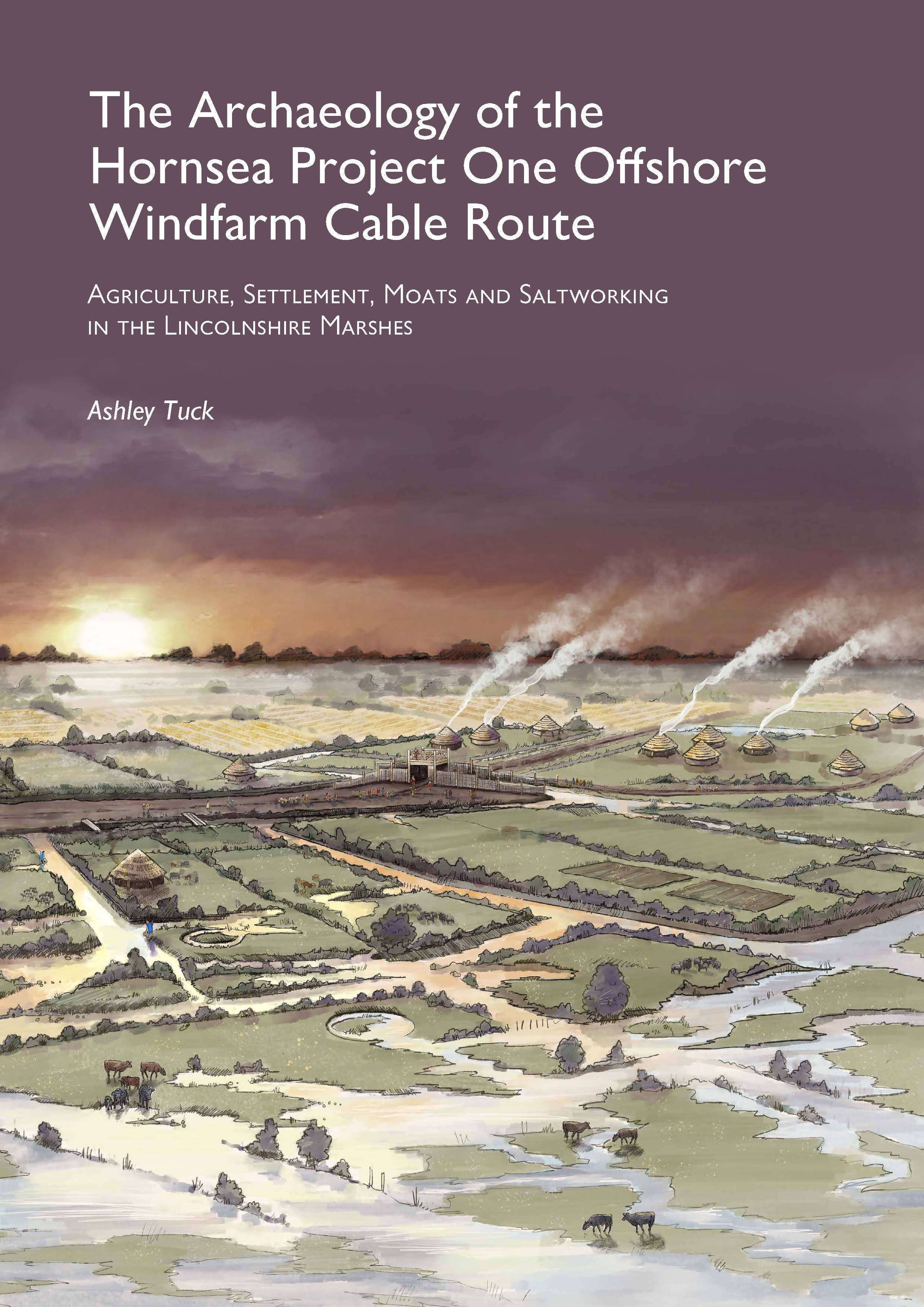The Archaeology of the Hornsea Project One Offshore Windfarm Cable Route: Agriculture, Settlement, Moats and Saltworking in the Lincolnshire Marshes
Ashley Tuck

Description
During the installation of cables connecting Hornsea Offshore Wind Farm to the national grid, an archaeological transect was recorded across northern Lincolnshire. This publication is the culmination of a decade of work employing a diverse variety of archaeological techniques.
Parts of six settlements of Iron Age to Romano-British date were excavated, along with part of a regionally rare Anglo-Saxon settlement, two medieval moated sites and extensive evidence for medieval saltworking.
The Iron Age/ Romano-British settlements ranged in size, form, complexity and date, each occupying a different position within the landscape of the Lincolnshire Middle Marsh. The work has helped to address geographical biases in the identification of this type of site. In the marsh they had been overlooked prior to the 21st century, and developer-funded excavation continues to be mainly focused in the increasingly industrialised environs of Immingham. Extensive information was obtained about the closed subsistence economies of the marsh, including from animal bone and organic residue analysis. In this age of climate change, a valuable cautionary tale is found in that of a coastal settlement at Humberston that was inundated and buried beneath tidal silts at the end of the 3rd century AD.
The two medieval moats are elements in a series of such sites located along a low ridge in the marsh. One moat may have been part of a minor seigneurial seat, but the other is much larger and almost certainly represents something more complex. A non-normative burial was made here at the parish boundary, the remains of a large man possibly representing an unsuccessful participant in mutual combat, or the victim of murder.
It may be surprising to discover that it is saltmaking that has transformed the Outmarsh from poor wetland pasture into the 'improved' arable land we see today. Frequent remains of the apparatus used in the medieval sandwashing technique of salt production were revealed. A by-product of this process was the creation of the large mounds of saltern waste that helped to 'reclaim' this marginal land.
Details
| Published | Published By | Pages | ISBN | ||||||||||||||||||||||||||||||||||||||||||||||||||||||||||||||||||||||||||||||||||||||||||||||||
|---|---|---|---|---|---|---|---|---|---|---|---|---|---|---|---|---|---|---|---|---|---|---|---|---|---|---|---|---|---|---|---|---|---|---|---|---|---|---|---|---|---|---|---|---|---|---|---|---|---|---|---|---|---|---|---|---|---|---|---|---|---|---|---|---|---|---|---|---|---|---|---|---|---|---|---|---|---|---|---|---|---|---|---|---|---|---|---|---|---|---|---|---|---|---|---|---|---|---|---|
| Jan. 1, 2023 | Wessex Archaeology | 425 | 978-1-7391876-1-3 | ||||||||||||||||||||||||||||||||||||||||||||||||||||||||||||||||||||||||||||||||||||||||||||||||
| License Information | |||||||||||||||||||||||||||||||||||||||||||||||||||||||||||||||||||||||||||||||||||||||||||||||||||
| Copyright © Wessex Archaeology. This work is openly licensed via CC BY-NC-ND 4.0 | |||||||||||||||||||||||||||||||||||||||||||||||||||||||||||||||||||||||||||||||||||||||||||||||||||
